Mozambique: President Chapo visits Angola to boost bilateral ties
Dambuza, the boy who exchanged medicine for the national liberation armed struggle
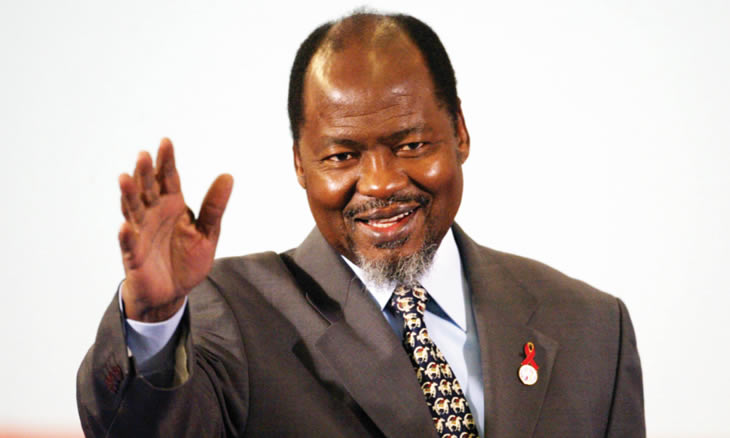
File photo: O País
The former President of the Republic, Joaquim Chissano, celebrates his 80th birthday today. Chissano was born on October 22, 1939 in Malehice, Gaza province, and dedicated himself to the struggle for national independence at a young age.
The boy born a Mozambican in Malehice, Chibuto, Gaza, ceased to be an ordinary person many decades ago. His mother gave birth on October 22, 1939, in one of the rooms of her house precisely 80 years today.
Family members of the newborn wanted to baptize him, and, because he was born on the first day of the week, some wanted to call him Domingo. The name did not stick, but Dambuza did, taking root and becoming part of the identity of the new baby of the Chissano family. The name was given to him by Mwankondjani, widow of Dambuza Muianga, brother of Joaquim Alberto Chissano’s maternal grandfather.
This means that the boy from Malehice grew up with two names. If the first one came from the grandmother’s will to immortalize her husband, the one on the register is paternally inspired. God-fearing Alberto Chissano, who was already teaching at the mission of the priests at the time, did not want to give just any name to his son. Far from it. With the consent of his wife, Mariana Muianga, he fell back on the Bible to find a proper name for their baby. Saint Joachim was the husband of Saint Anne, the parents of the Virgin Mary, mother of Jesus.
Scripture aside, in Malehice, little Dambuza grew up at a time when the world was plunged into World War II, which had just begun in 1939. According to custom in Chibuto administrative post, he ate sand and dried chicken excreta to strengthen his teeth as a baby. A bit older, he built wire trolleys with corn canes, reeds, bamboo, toothpicks and empty milk cans for wheels, or whittled sticks using a machete or pocket knife.
These were not Dambuza’s only achievements. The boy proved versatile from an early age, playing football with his young friends, even including Eusébio da Silva Ferreira, who had been taken by his mother to study in Malehice.
From an early age, Dambuza’s big dream was to graduate in medicine. While having fun with the other children, grazing cattle or hunting mice in the bush to eat with piripiri, he learned from his father to invest in his future. School was a great ally in this. Among other schools, Chissano studied at Mouzinho de Albuquerque, current 24 de Julho4, in the city of Xai-Xai, and at the Munhuana Mission School, in Lourenço Marques (now Maputo).
In the capital of the colony, he built with his brother José the wood and zinc house in the Mafalala neighbourhood where he lived with him, his sister Maria and his grandmother Rosa.
After 1951, when he enrolled as the first black student at the Salazar High School (now Josina Machel Secondary School), he joined the Negros Associative Centre in order to take part in the Mozambican Secondary Students Centre (NESAM), in the Xipamanine neighbourhood.
Mafalala resident Caifaz Muzima first told him about this organisation. When Chissano joined the group in 1954, it was chaired by Gabriel Simbine, the brother of Graça Simbine, later Graça Machel. Five years earlier, the organ had been created at the suggestion of Eduardo Mondlane. Its founders were Herbert Stefan Matsolo, Georgete Libombo, Inês Xavier, Eulália Maximiano, Sidónio Libombo, Almeida Penicela and Sarmento José, and its aim was to encourage a taste for study, interaction between students, debates on themes related to school subjects and, above all, defending the interests of blacks in the colony of Mozambique.
By this time, Chissano was beginning to develop a sense of leadership and management of the few resources at his disposal. For example, he could get to high school at the Museu by machimbombo but, aware of his own financial limitations, he preferred to walk from his home in Mafalala to school. The round trip was a two-hour walk, but saved four Portuguese escudos – enough for three loaves of bread and 40 litres of water.
Once a member of NESAM, Chissano was convinced by his friends Mario Machungo and Magno Hungwana to run for president. The idea startled him at first, but then he accepted and won the election, one of his best friends, Pascoal Mocumbi, becoming vice-president.
One of Joaquim Alberto Chissano’s great challenges at NESAM was to develop an appreciation of Mozambican culture, within a context of discrimination and prejudice. That is why, among many functions, the then president created and staged a short play about the need to enhance cultural values and the importance of education for women. This was one of the first public performances by the grandson of Munthuyedwa Xisanu and Muhotwanyanani Nkuna, a nationalist who, like many of his countrymen and women, discovered their political vocation in the land of the enemy: the Portuguese colonial regime.
November 4, 1960: The beginning of a 14-year journey
On November 4, 1960, Joaquim Alberto Chissano first boarded a plane to the city of Lisbon (Portugal) to study medicine. It was an unforgettable, emotional journey, as he had to say goodbye to his parents and country as never before. On the plane, Chissano was delighted at every moment, cheerful and relaxed, never realising that something was wrong when the pilot began to dump his fuel in flames. He realised this only when, after an hour of flight, the pilot announced that they would have to return to Kano, Nigeria, because one of the plane’s engines was broken. Passengers had to stay overnight in Nigeria, continuing their trip to Portugal the next day. Soon, instead of 24 hours later, Chissano arrived in Lisbon on Sunday, 48 hours after leaving Lourenço Marques.
Chissano was 21 years old when he arrived in the Portuguese capital. Once there, he lived in Rua de São Mamede with Pascoal Mocumbi. It was in Portugal that the former president of NESAM came into contact with politics in the broadest sense of the term, learning about many hitherto unknown realities, such as the Portuguese social situation and the popular uprisings in Angola.
In addition to Rua de São Mamede, he also lived in Rua Visconde de Valmor, also sharing a room with his friend Pascoal Mocumbi. But the two Mozambicans would not stay there long.
Eight months after arriving in the Portuguese capital on June 24, 1961, Chissano secretly left Portugal and travelled to France, still without the conditions attendant upon his scholarship, which was late arriving from Lourenço Marques. But the future doctor had a good friend in Pascoal Mocumbi, who lent him money for transport and other personal expenses.
When Joaquim Chissano left for France, where he often washed in the town’s public changing rooms, he was 22 years old and already knew that he would have to contribute to the liberation of his people. So, between the desire for the fight and the medical training, something went wrong. The young Mozambican had trouble learning his subject material, in a context where he was still trying to digest the emotion of the flight from Portugal.
The new education system and a parallel harsh winter interfered with the student’s performance, and doubts about his academic future began to disturb him. It occurred to the young man from Malehice that perhaps medicine had not been the best choice. He thought about switching courses. Agronomy and zoology were strong possibilities. But before any decision, and always out of the limelight, because PIDE was attentive to what was happening in France, he founded and chaired the Mozambican Students Union (UNEMO). As happened with NESAM, its vice president was again Pascoal Mocumbi. The post of Secretary of International Relations was entrusted to Nhambiu and Treasury fell to Ana Simão. Chissano also headed the General Union of Black African Students under Portuguese colonial domination (UGEAN).
With his “comrades” in Paris, Chissano introduced UNEMO to the French National Students Union, and contacted the Prague-based International Students Union and the International Students Conference in Quebec.
It was as UNEMO president that Chissano was able in 1961 to contact Marcelino dos Santos and discuss with him the challenges facing the Mozambican nationalists. From this contact with the then Secretary-General of the Conference of Nationalist Organizations of the Portuguese Colonies (CONCP), it became possible for UNEMO to establish links with UDENAMO, led by Adelino Gwambe; MANU, led by Mateus Mole; and former members of NESAM, such as Filipe Samuel Magaia and João Munguambe, all of them already settled in Dar es Salaam, Tanzania. He renewed his acquaintance with many of these compatriots in the Tanzanian capital in 1962 at the founding of the Mozambique Liberation Front (Frelimo).
By Jose dos Remedios




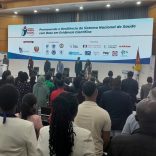
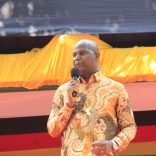
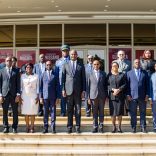


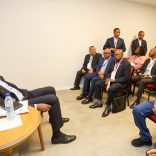
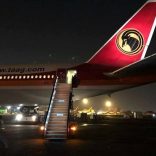

Leave a Reply
Be the First to Comment!
You must be logged in to post a comment.
You must be logged in to post a comment.